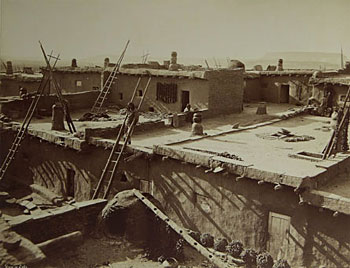| photography
The World in a Frame
Photographs from the Great Age of Exploration 1865-1915
The invention of photography in 1839 coincided with a great age of exploration and travel. The medium proved to be a suitable tool for colonial possession and control. For with it one could delimit the world, make it tangible, and return with it to the metropole. Here these visual surrogates could be preserved and classified, for the benefit of science or art.
Befitting their task of exploration, it is appropriate that all of the photographers represented here were migrants or immigrants. Although all were professionals, their motives were multiple and mixed. Some were sponsored by governmental surveys (O'Sullivan, Jackson, Hillers), while others were commercial (Curtis, Bonfils, Beato), and some were both at different points in their careers (Watkins, Monsen).
Taking photographs in the late 19th century was an extreme challenge. Until the development of flexible cellulose film in 1888, photographs were recorded on glass plates, using "wet-plates" that had to be exposed and developed while the chemicals were still wet (introduced in 1851), or the subsequent "dry-plate" process, which used prepared plates (1878). With the exception of Curtis and Monsen, these immense pictures are not enlargements, but were printed directly from the same size negative. Again, with the exception of the later Curtis and Monsen prints, these photos are albumen prints, made with eggwhites, yielding rich yellow and brown tones.

John K. Hillers
View, Zuni Pueblo
New Mexico; 1879
[more]
thanks to wood s lot |

